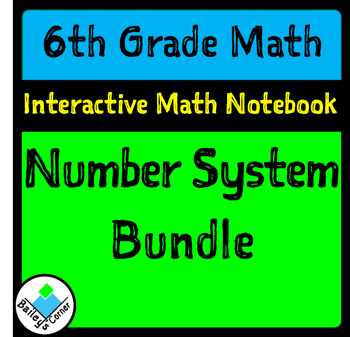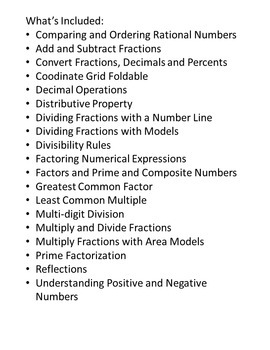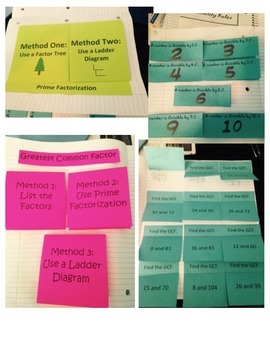6th Grade Math NS Bundle for Interactive Notebook
- Zip
Products in this Bundle (18)
showing 1-5 of 18 products
Description
This incredible bundle includes all my 6th grade number sense foldables and practice pages for interactive notebooks.
Don't forget to rate me to earn your TPT credits and follow me to be the first to see my new products and discounts. Contact me with any questions! :)
Visit my store to see my other products.
Like me on Facebook.
Follow me on Pinterest.
Add Subtract Fractions unlike denominators Foldable for Interactive Notebook
Comparing and Ordering Rational Numbers for Interactive Notebook
Convert Fractions, Decimals, and Percents
Graphing Ordered Pairs Foldable
Decimal Operations foldable for interactive notebook
Distributive Property foldable with practice for interactive notebook
Divide Fractions with a Number line
Dividing Fractions Using Models 6.NS.1
Divisibility Rules Foldable for Interactive Math Notebook
Factoring Numerical Expressions for Interactive Math Notebook
Factors and Prime and Composite Numbers
Greatest Common Factor Foldable for Interactive Notebook
Find GCF and LCM using a ladder diagram foldable with practice
LCM Foldable for Interactive Notebook
Multiply and Divide Fractions Foldable for Interactive Notebook
Multiply Fractions with Area Models for Interactive Math Notebook
Prime Factorization Foldable for Interactive Notebook
Understanding Positive and Negative Numbers and Absolute Value
Check out my other Number Sense products on TPT:
Integer Operations Foldable for Interactive Notebook
Real Numbers Graphic Organizer
Estimating Square Roots foldable
Convert Repeating Decimals to Fractions
Quarterly Table of Contents Foldable for Interactive Notebook





